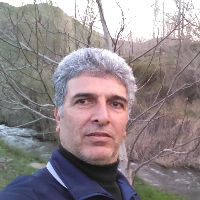An Archaeological Analysis of the Existing Shell Vessels (Libation Shell) in the Archaeological Contexts of the Iranian Plateau in the Third to the First Millennium B.C.
Author(s):
Article Type:
Research/Original Article (دارای رتبه معتبر)
Abstract:
Sea shells are natural-biological objects. They are embedded in geological layers in the form of fossils, but also, to find in archaeological deposits as a result of human activities. Archaeologists can use the provenance of shells in the functional analysis of ancient sites in terms of social archeology and prehistoric trading activities. Aarcheological excavations in several sites of the Iranian Plateau have shown that from the 3rd third millennium B.C. onwards, finds of of sea shells (e.g. Lambis, Dentalium, etc.) rapidely increased. Such shells were for instance discovered from ritual cemetery contexts such as Shahdad, Tepe Hesar, Kale Nisar cemeteries or Bani Surma. These objects are mainly used as natural or polished shells. In some cases, they served as a raw material for making all kinds of beads, buttons, and other ornamental objects.. The main question is to understand the relationship between the use of seashells and archaeological context, and also, their role in Bronze Age ritual life. In this article, the descriptive, analytical method has been used in the biological recognition of all types of shells. This method is also used based on similar studies on this issue in Mesopotamia's archeology of the Sumerian-Akkadian period. The distribution of recognizable species shows that these objects are concentrated in the settlements from south to southeast of Iran in the coastal strip of the Persian Gulf, and from the Oman Sea to the Zagros intermountain valleys, as well as in the northwest and northeast of Iran. The biological origin can be placed in the northern shores of the Oman Sea to the Gulf of Kutch on the northern coast of the Indian Ocean. It seems that with the growth and development of urbanization in Southwest Asia and especially the development of sea trade, oysters have been traded as valuable goods and other prestige goods. The importance of the shell findings is more than the value of the shells themselves because they were used as sacred goods in religious affairs. Analysis of the fields where the shells were discovered is more related to cemeteries and temples as sacred spaces. Also, the significant presence of Lambis shells for the production of specific ritual bowls, placed together with bronze axes in graves, can be seen as the reflection of a patriarchic tradition in the social-political organisiation of the third and second millennia B.C. Despite many excavations and the discovery of many samples of these types of shells, no furthergoing investigation on these specific objects was undertaken so far. This desideratum reveals more valuable findings in the archeology of the Iranian plateau. Therefore, one of this article's final goals is to focus more on analyzing the context of the discovery of seashells in future Excavation
Language:
English
Published:
Journal of Archaeological Studies, Volume:15 Issue: 2, Summer-Autumn 2023
Pages:
167 to 183
https://www.magiran.com/p2685749
سامانه نویسندگان
مقالات دیگری از این نویسنده (گان)
-
The Role of Earthquakes in the Distribution of Bronze and Iron Age Settlements in the East of Central Zagros, Iran
Parvaneh Ahmadtajari, *, Mehdi Zare
Parseh Journal of Archaeological Studies, -
Structuralism in archeology and its application in the analysis of cultural materials left from the past
Mohammadhassan Salek Akbari, *
Iranian Journal of Anthropology Research,



